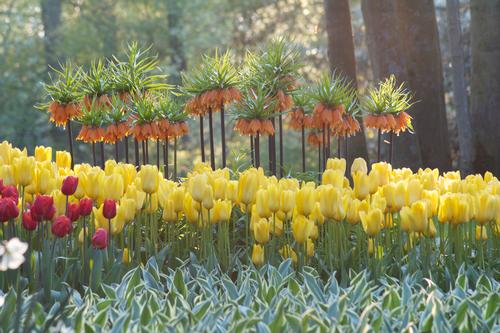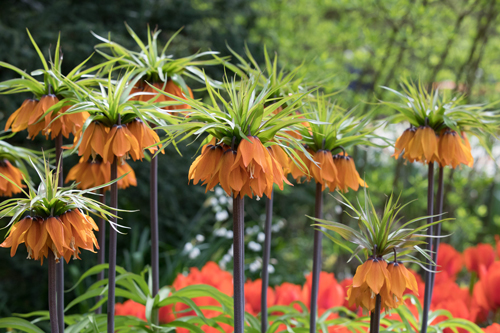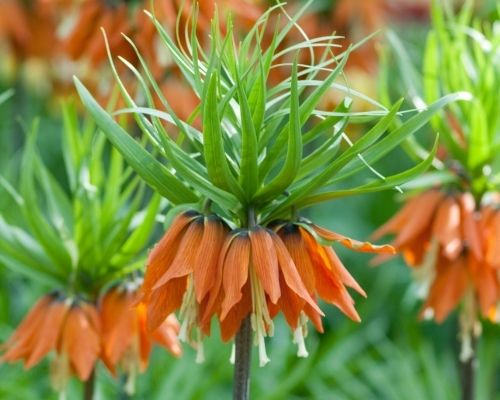Your Guide to Planning, Planting, and Growing Fritillaria
Want a touch of the exotic for your spring flower garden? Consider fritillaria! These fall-planted bulbs with unusual, bell-shaped flowers are good companions for tulips, daffodils, hyacinths and other spring-blooming bulbs.
Shop for fritillaria bulbs HERE.
Plan for Success
Sun or Shade: Most fritillaria will grow in full sun or light shade. Fritillaria meleagris prefers dappled shade.
Hardiness Zone: Fritillaria will survive the winter in hardiness zones 4-8. To find your USDA growing zone, click here.
Soil Conditions: Most spring-flowering bulbs prefer relatively dry growing conditions, especially in the summer months. Fritillaria need slightly more moisture during the growing season and perform best in soil that is high in organic matter. Well drained soil is important to ensure the bulbs don't rot during the winter.
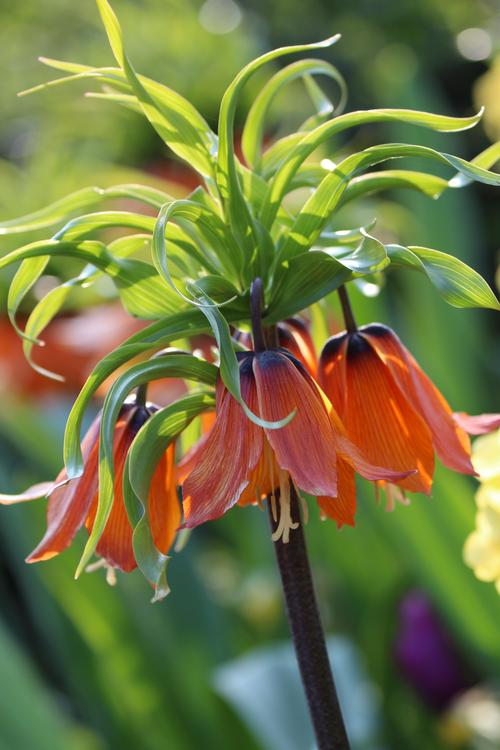
Where to Plant
There are several different Fritillaria species available for home gardens. It is important to understand their different growth habits when you are deciding which ones to buy and where to plant them.
Crown imperials (Fritillaria imperalis) grow 24 to 36” tall. Each bulb produces one stem, topped with a cluster of yellow, cream or red-orange bells and a spiky green topknot. These unusual-looking plants add color and excitement to spring flowerbeds. They can be planted in groups, individually, or in combination with tulips, daffodils, hyacinths and other spring-flowering bulbs. Crown imperials grow well in shade gardens and may also be planted in meadows and open woodlands.
Snake’s head fritillaria (Fritillaria meleagris), also known as guinea hen flowers, are 12-15" tall. The bulbs produce grassy foliage and one or more stems, each with a single dangling flower. The flower petals can be creamy white, pink or burgundy and typically display a checkered pattern. Fritillaria meleagris has a delicate charm that’s best appreciated up close. Plant the bulbs in flowerbeds and borders, rock gardens, woodland gardens and damp, grassy meadows. Snake’s head frittilaria prefer growing in dappled shade, though they will also grow quite well in full sun.
Michael's flower (Fritillaria michailovskyi) has grassy foliage and nodding bell-shaped flowers that are maroon with golden yellow edges. They grow about 8" tall and need well drained soil. Ideal for rock gardens.
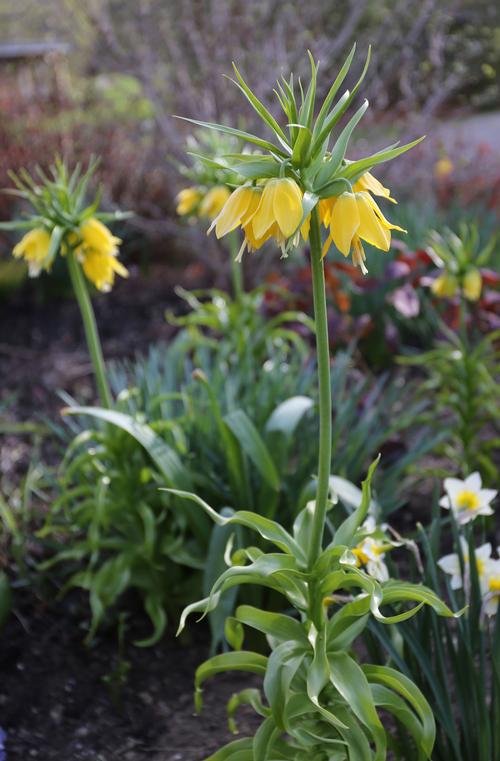
How to Plant Fritillaria
When to Plant: While most fall-planted bulbs have a protective covering (called a tunic) that helps prevent moisture loss, fritillaria bulbs have no such protection. This makes them more perishable, so the less time the bulbs are out of the ground the better. Purchase fresh, properly stored bulbs as soon as they are available, and get them planted by mid-October.
Depth and Spacing: Plant crown imperial bulbs 6” deep. Fritillaria meleagris and michailovskyi should be planted 3” deep.
Planting Tips: If you are growing fritillaria imperialis as an annual, there is no need to fertilize the bulbs at planting time. For other types, you can add compost and a small amount of all-purpose fertilizer at planting time.
Crown imperials have a natural depression on the top of the bulb where moisture can gather. This makes them more vulnerable to rot, so it's especially important to plant them in well-drained soils. At planting time, adding coarse sand, finely crushed stone or perlite to the planting hole can also help encourage good drainage.
Fritillaria imperialis bulbs (and plants) have a slightlly skunky odor that repels rodents as well as deer.
For a natural look, plant Fritillaria meleagris in groups of 6 or more bulbs.
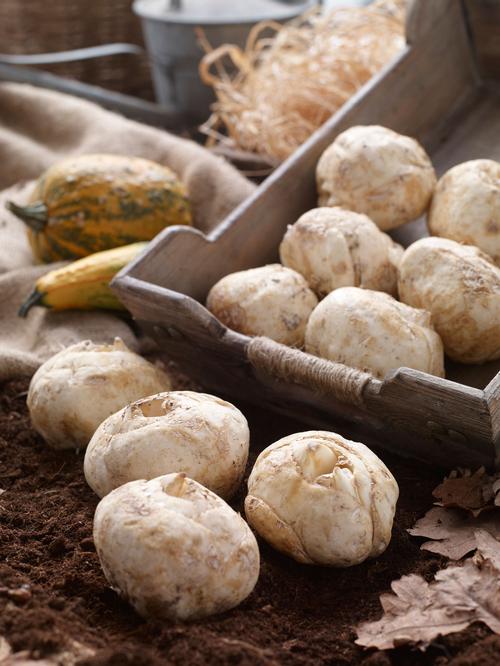
What to Expect
Fall-planted bulbs begin growing roots soon after they are put into the ground. Once cold weather arrives, they go dormant for the winter months. In early spring, the bulbs will sprout and begin to send up new growth, followed by stems and buds.
Though fritillaria are rarely bothered by deer or rodents, as members of the lily family, they are vulnerable to being damaged by the red lily leaf beetle. If these pests are a problem in your area, you'll need to control them, starting in early spring as soon as the foliage emerges. Continue collecting/killing both beetles and larvae until early summer when the plants die back to the ground.
There's one other thing to know about growing fritillaria. In any given batch of bulbs, a percentage of them will be "blind." These are bulbs that come up and produce foliage, but do not produce a flower. This behavior is somewhat of a horticultural mystery. It's not about the size or quality of the bulbs -- just an annoying characteristic of the species. Since there's no way to know ahead of time which bulbs will not bloom, it's good to plant extras so you're not disappointed.
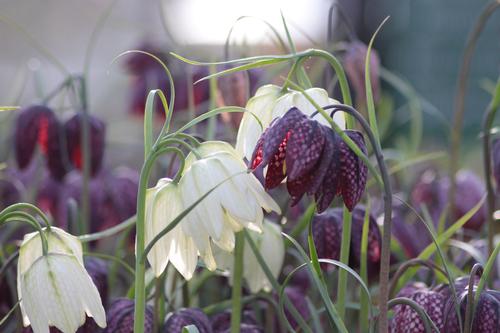
Caring for Fritillaria After They Bloom
Gardeners often treat Fritillaria imperialis as an an annual, but when they are given the right growing conditions, the bulbs will rebloom and even multiply. If you want try getting the bulbs to bloom again the next spring, fertilize the plants before they flower or immediately afterwards. Snip off the spent flowers and allow the foliage to continue growing until it has completely yellowed. At this point you can cut off the flower stalk at or just above ground level.
In fertile, moist, but well-drained soil, snake’s head fritillaria will usually multiply and come back to bloom again each spring. To encourage these bulbs to perennialize, fertilize the plants either before they bloom or immediately afterwards. And ensure the bulbs don’t completely dry out during summer and fall.
To learn more, you may be interested in:
How to Plan a Spring Bulb Garden
Bloom Time Chart for Spring and Summer Bulbs
Spring-Blooming Bulbs for Shady Gardens
